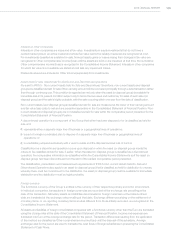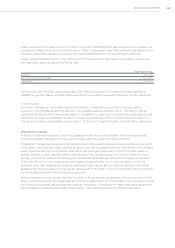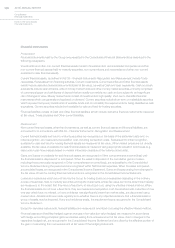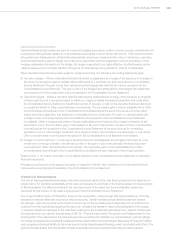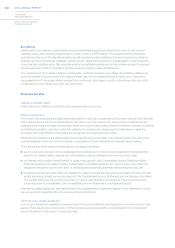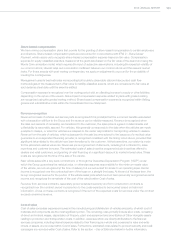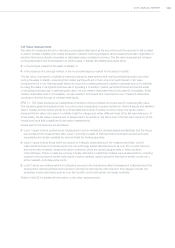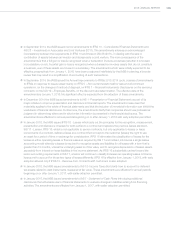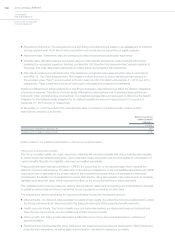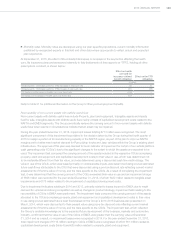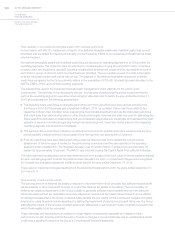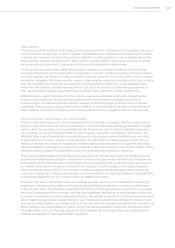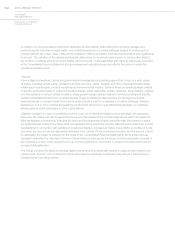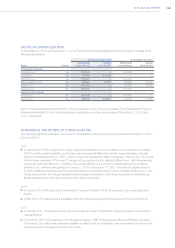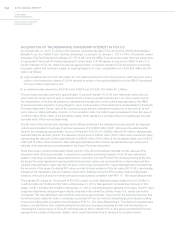Chrysler 2015 Annual Report Download - page 155
Download and view the complete annual report
Please find page 155 of the 2015 Chrysler annual report below. You can navigate through the pages in the report by either clicking on the pages listed below, or by using the keyword search tool below to find specific information within the annual report.
2015 | ANNUAL REPORT 155
In September2014, the IASB issued narrow amendments to IFRS 10 – Consolidated Financial Statements and
IAS 28 – Investments in Associates and Joint Ventures (2011). The amendments address an acknowledged
inconsistency between the requirements in IFRS 10 and those in IAS 28 (2011), in dealing with the sale or
contribution of assets between an investor and its associate or joint venture. The main consequence of the
amendments is that a full gain or loss is recognized when a transaction involves a business (whether it is housed
in a subsidiary or not). A partial gain or loss is recognized when a transaction involves assets that do not constitute
a business, even if these assets are housed in a subsidiary. The amendments which were initially expected to be
effective prospectively from January 1, 2016, have been postponed indefinitely by the IASB in planning a broader
review that may result in a simplification of accounting of such transactions.
In September 2014, the IASB issued the Annual Improvements to IFRSs 2012-2014 cycle, a series of amendments
to IFRSs in response to issues raised mainly on IFRS 5 – Non-current assets held for sale and discontinued
operations, on the changes of method of disposal, on IFRS 7 – Financial Instruments: Disclosures on the servicing
contracts, on the IAS 19 – Employee Benefits, on the discount rate determination. The effective date of the
amendments is January 1, 2016. No significant effect is expected from the adoption of these amendments.
In December 2014 the IASB issued amendments to IAS 1- Presentation of Financial Statements as part of its
major initiative to improve presentation and disclosure in financial reports. The amendments make clear that
materiality applies to the whole of financial statements and that the inclusion of immaterial information can inhibit the
usefulness of financial disclosures. Furthermore, the amendments clarify that companies should use professional
judgment in determining where and in what order information is presented in the financial disclosures. The
amendments are effective for annual periods beginning on or after January 1, 2016 with early adoption permitted.
In January 2016, the IASB issued IFRS 16 - Leases which sets out the principles for the recognition, measurement,
presentation and disclosure of leases for both parties to a contract and replaces the previous leases standard,
IAS 17 - Leases. IFRS 16, which is not applicable to service contracts, but only applicable to leases or lease
components of a contract, defines a lease as a contract that conveys to the customer (lessee) the right to use
an asset for a period of time in exchange for consideration. IFRS 16 eliminates the classification of leases for the
lessee as either operating leases or finance leases as required by IAS 17 and instead, introduces a single lessee
accounting model whereby a lessee is required to recognize assets and liabilities for all leases with a term that is
greater than 12 months, unless the underlying asset is of low value, and to recognize depreciation of leases assets
separately from interest on lease liabilities in the income statement. As IFRS 16 substantially carries forward the
lessor accounting requirements in IAS 17, a lessor will continue to classify its leases as operating leases or finance
leases and to account for those two types of leases differently. IFRS 16 is effective from January 1, 2019, with early
adoption allowed only if IFRS 15 - Revenue from Contracts with Customers is also adopted.
In January 2016, the IASB issued amendments to IAS 12- Income Taxes that clarify how to account for deferred
tax assets related to debt instruments measured at fair value. These amendments are effective for annual periods
beginning on or after January 1, 2017, with earlier adoption permitted.
In January 2016, the IASB issued amendments to IAS 7 - Statement of Cash Flows introducing additional
disclosures that will enable users of financial statements to evaluate changes in liabilities arising from financing
activities. The amendments are effective from January 1, 2017, with earlier adoption permitted.


